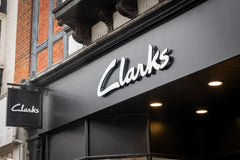
Unmasking Ghost Stores: The Rise of Online Fashion Scams in Australia
Table of Contents
- Key Highlights:
- Introduction
- The Ghost Store Phenomenon
- Tactics of Deceptive Marketing
- Identifying Ghost Stores: Red Flags to Watch For
- The Broader Impact on Legitimate Retailers
- Consumer Education and Protection Strategies
- Conclusion
- FAQ
Key Highlights:
- The Australian Consumer and Competition Commission (ACCC) has issued warnings about "ghost stores" that impersonate legitimate fashion retailers, leading to significant consumer losses.
- In 2023, Australians lost approximately A$2.74 billion to various scams, with the full financial impact of ghost stores yet to be determined.
- Recognizing the tactics used by these fraudulent retailers can help consumers avoid falling victim to their deceptive marketing strategies.
Introduction
In an increasingly digital marketplace, the allure of online shopping has opened new avenues for consumers but also for fraudulent enterprises. Among these, the emergence of "ghost stores" has raised alarms, particularly within Australia’s fashion sector. These online entities masquerade as reputable retailers, leveraging discount pricing and compelling narratives to lure unsuspecting shoppers into a web of deception. The Australian Consumer and Competition Commission (ACCC) has recently highlighted this issue, associating ghost stores with a rise in consumer complaints and financial losses. This article delves into the mechanics of these scams, their impact on consumers, and essential strategies to identify and avoid falling prey to them.
The Ghost Store Phenomenon
Ghost stores are characterized by their impersonation of established fashion brands, often attempting to create a façade of authenticity. Professional-looking websites adorned with appealing imagery from famous Australian locales, such as Melbourne's vibrant cityscape or the picturesque beaches of Byron Bay, contribute to their deceptive allure. The narrative typically revolves around an "exclusive" brand that has been in existence for decades, now offering significant discounts due to a supposed business closure or relocation.
Despite the appealing presentation, the truth is often starkly different. Behind the glossy surface lies cheaply manufactured clothing sourced from factories in China, compromising quality in favor of profit. The ACCC's warnings have specifically named several ghost store websites that have been reported by consumers, shedding light on the growing prevalence of these scams.
The Financial Impact of Scams
The ACCC's Targeting Scams report indicates that Australians lost an astonishing A$2.74 billion to various scams in 2023, with investment scams, remote access scams, and romance scams leading the charge. While the figures surrounding ghost stores remain elusive due to their recent emergence, it is conceivable that the negative experiences of consumers could deter them from engaging with legitimate online retailers in the future. This shift in consumer behavior risks undermining trust in the broader e-commerce landscape.
Emerging Trends in Online Scams
Online ghost stores are a relatively new phenomenon, and research into their financial impact is still in its infancy. However, the ACCC has recorded over 360 complaints related to approximately 60 ghost retailers since the beginning of 2025. This trend highlights a pressing need for consumer awareness and education regarding the tactics employed by such fraudulent operations.
Tactics of Deceptive Marketing
Ghost stores utilize a variety of sophisticated tactics to ensnare consumers. Understanding these strategies can empower shoppers to make more informed decisions and recognize when they are being targeted.
Price Manipulation
One of the key tactics employed by ghost stores is pricing manipulation. The perception that higher prices equate to better quality is deeply ingrained in consumer psychology. For example, a “luxury” silk dress priced at A$82.95—originally tagged at A$209.95—appears to offer immense value, stimulating impulse purchases. This pricing strategy taps into the consumer's belief in discounts as indicators of quality, despite the reality of the product's origins and construction.
Local Trust and Cosmopolitan Localism
Ghost stores often exploit a phenomenon known as cosmopolitan localism, wherein consumers feel a greater sense of trust towards businesses that appear local. By presenting themselves as based in trendy cities like Melbourne or Sydney, these websites create an illusion of authenticity. The presence of storefront images further enhances this credibility, leading consumers to believe they are purchasing from a familiar, reputable source.
Emotional Storytelling
Emotional storytelling serves as a powerful tool in consumer marketing, and ghost stores are adept at employing this technique. By crafting narratives around "going out of business" sales or personal stories of struggle, these retailers tug at shoppers' heartstrings. This emotional connection can compel consumers to act quickly, often without conducting thorough research.
Professional Website Design
The design of ghost store websites plays a critical role in their effectiveness. High-quality images, detailed product descriptions, and user-friendly payment systems create an illusion of professionalism and legitimacy. This can lead shoppers to overlook red flags that would typically trigger skepticism.
Identifying Ghost Stores: Red Flags to Watch For
Navigating an online shopping landscape rife with ghost stores necessitates vigilance. Here are some indicators that can help consumers discern legitimate retailers from fraudulent entities.
- Lack of Contact Information: Legitimate businesses provide clear contact details, including a phone number and physical address. If a website only lists an email or a web form, it’s a potential red flag.
- Domain Name: Websites ending in ".com" rather than ".com.au" often indicate that the business is not based in Australia, which can be a sign of illegitimacy.
- Business Registration: Utilizing resources like the Australian Business Register (ABR) can confirm whether a business is officially registered. A quick search can reveal discrepancies between claimed locations and actual registrations.
- Online Reviews: While a website may showcase glowing testimonials, consulting third-party review platforms like Trustpilot can provide a more balanced perspective. Negative reviews or reports of scams should not be ignored.
- Image Authenticity: Advances in technology mean that some images used on these websites may be AI-generated. A simple reverse image search can reveal if product photos are original or stolen from other sources.
The Broader Impact on Legitimate Retailers
The rise of ghost stores has implications beyond individual consumer losses. Established fashion retailers may face a decline in consumer confidence as shoppers become more cautious about making online purchases. This erosion of trust can lead to diminished sales for legitimate businesses, creating a broader economic impact on the fashion industry.
Case Studies of Affected Retailers
While the extent of damage caused by ghost stores is still being evaluated, anecdotal evidence suggests that legitimate retailers are already feeling the repercussions. Small businesses that have built reputations over years may find themselves struggling as consumers become increasingly skeptical of online shopping. The perception of their authenticity is undermined by the existence of ghost stores that exploit similar branding and marketing tactics.
The Role of Social Media
Social media platforms serve as important channels for ghost store marketing. With targeted advertising that capitalizes on geographical and demographic data, these fraudulent retailers can reach potential customers more effectively. This poses significant challenges for both consumers and regulatory bodies aiming to combat such scams.
Consumer Education and Protection Strategies
As ghost stores proliferate, consumer education becomes paramount. Empowering shoppers with knowledge about identifying scams can significantly reduce the risk of falling victim to these fraudulent operations.
Public Awareness Campaigns
Government bodies, consumer advocacy groups, and even established retailers can collaborate on public awareness campaigns. These initiatives should focus on educating consumers about the signs of ghost stores, the tactics employed by scammers, and methods for verifying the legitimacy of online retailers.
Tools and Resources
Creating and promoting tools that assist consumers in verifying businesses can be an effective strategy. This could include user-friendly guides on how to check business registrations, evaluate reviews, and assess website legitimacy.
Encouraging Reporting
Encouraging consumers to report suspected ghost stores to authorities can enhance monitoring efforts and help prevent others from falling victim to scams. The ACCC's ongoing efforts to track complaints are vital in understanding the scope of the issue and addressing it effectively.
Conclusion
The emergence of ghost stores in Australia presents a significant challenge for consumers navigating the online fashion landscape. By understanding the tactics employed by these fraudulent enterprises and recognizing the red flags that signal a scam, shoppers can make informed decisions and protect themselves from potential losses. As the digital marketplace continues to evolve, fostering consumer awareness and enhancing regulatory measures will be crucial in combating the growing tide of online fraud.
FAQ
What are ghost stores?
Ghost stores are fraudulent online retailers that imitate legitimate fashion businesses, often offering discounted products that are poorly made and sourced from overseas manufacturers.
How can I identify a ghost store?
Look for red flags such as lack of contact information, domain names that do not end in ".com.au," absence of business registration, unrealistic reviews, and AI-generated images.
What should I do if I suspect I’ve encountered a ghost store?
Report your findings to the ACCC and consider leaving reviews on platforms like Trustpilot to warn other consumers. Additionally, check official business registries to confirm legitimacy.
Why is consumer education important in combating ghost stores?
Educating consumers about the tactics and signs of ghost stores can help prevent financial losses and restore confidence in legitimate online retailers, thus fostering a more trustworthy e-commerce environment.
Ενδυναμώστε το ηλεκτρονικό σας εμπόριο με τις εβδομαδιαίες μας αναλύσεις και ενημερώσεις!
Μείνετε ευθυγραμμισμένοι με το τι συμβαίνει στον κόσμο του εμπορίου
Διεύθυνση ηλεκτρονικού ταχυδρομείου
Επιλεγμένο για Εσάς

09 July 2025 / Blog
Hamleys Reports Strong Financial Growth Amid International Expansion
Διαβάστε περισσότερα09 July 2025 / Blog
Finix Launches Game-Changing WooCommerce Plugin for Seamless Payment Processing
Διαβάστε περισσότερα
09 July 2025 / Blog


